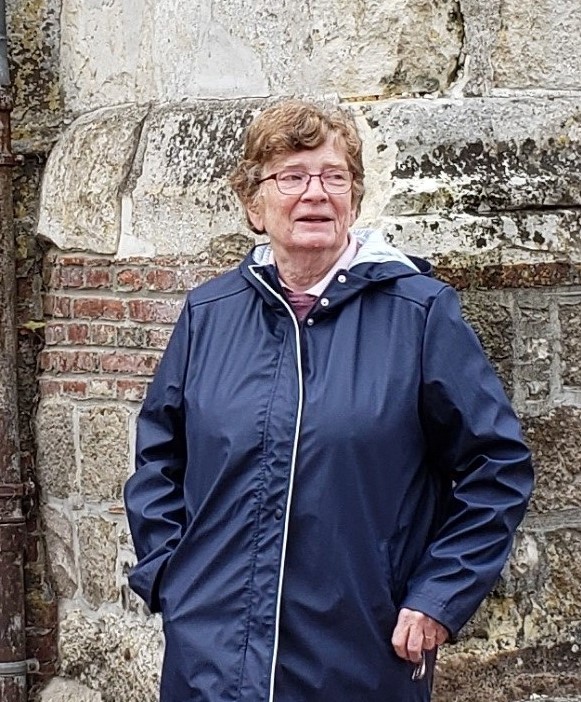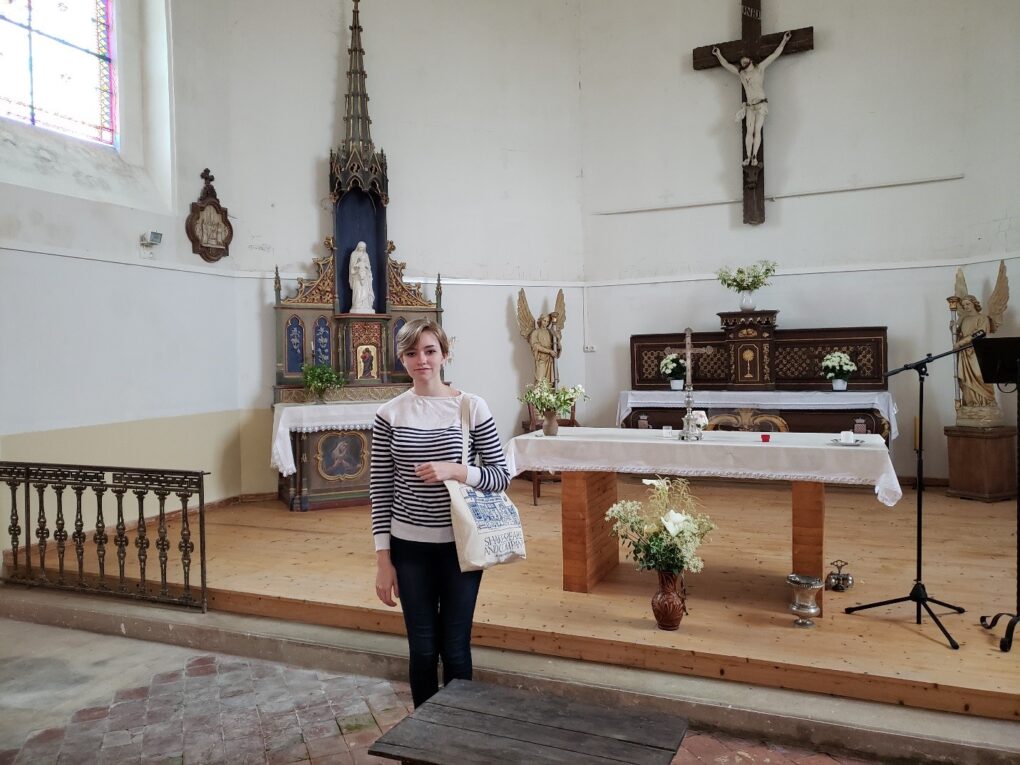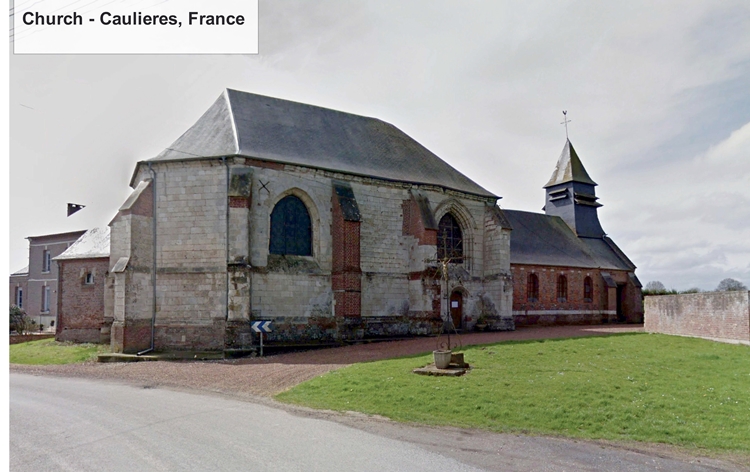Originally posted on September 14, 2019.
a reflection by Terri Collier
On a recent trip to France, mom Terri and daughter Nellie Collier traveled from Paris to Cauliéres, the village from which the Collier family got its name. Based on the research gathered at the Collier Heritage Foundation and genealogical records handed down, a 2nd son of a Barony was appointed Magistrate over an abbey and the village it owned in the Somme region of France. The village was named Cauliéres and having no land of his own, he took the name of the village, thus becoming Johanne Cauliéres (later Anglicized to Collier).
In addition to seeing the home of our ancestors, we hoped to visit the church where, according to records, a number of Collier ancestors served as priest in the 1300’s. Despite my failed attempts at advanced contact with residents of this small village (209 people in 2006), we arrived in Cauliéres unannounced. When Nellie asked if we had a plan, I said “Yes. We’re going to walk around town until someone asks us why we’re here” — and that is precisely what happened!

This lovely lady was on her morning walk when we inquired if we could ask her a few questions about the village. Thankfully she spoke English and was a very friendly and helpful tour guide. We explained our connection to the village and ask if it would be possible to see inside the church. She led us to her friend’s house, the literal keeper of the keys, who immediately demanded to know what we wanted to do in “her” church!

After a five minute discussion (which seemed a bit heated), our second guide joined our procession to the church. More conversation and a generous donation to the church warmed up the keeper of the keys and we heard much about her church, which is only used for worship one Sunday a year and for weddings and funerals.

The stone portion of the church dates to the 1300’s and is a quaint, but beautiful tribute to the faith of the generations in this lovely village. (Shown here with Nellie).

The inside of the church was simple, but well tended. We were told that the original abbey was a ruin in a nearby field, with its remaining walls only a few inches tall.

Sometimes teaching your children to appreciate their heritage takes you on a wild goose chase. There were plenty of eye-rolls and a few protests, but I promise you that one day, Nellie will tell her children about the day we went to the home of her ancestors!

Our visit was capped off by an introduction to the mayor, who was out riding his bike, and an inquiry from the police, seen here talking with the mayor. They were wondering who these strangers were on a Monday morning walking around their small village!
All in all, it was a day well-spent!
When I asked our guides about the history of Cauliéres (which apparently means cabbage), the “key lady” graciously invited us into her home, where she shared these two clippings. Could someone in Collier-land translate them?


Terri Stagner Collier, wife of Christopher Reid Collier
Nellie’s genealogy from the Barnesville, GA line:
Isaac Cuthbert Collier 1846 – 1908
Jena Cuthbert Collier 1866 – 1944
Durward Cuthbert Collier 1890 – 1979
Jena Cuthbert Collier II 1917 – 2003
Christopher Reid Collier 1958 – present
Nellie Catherine Collier 2000 – present

Here is another view of the Church using GoogleEarth Streetview.
Using GoogleEarth, type ‘Caulières, France’ in the search bar and then ‘enter’. At the village, zoom in on “D92” at the intersection of Rue de’n Haut and Rue de l’Eglise.

Hi Terry,
I am Jerome Collier, as a French I particularly appreciated your report !
It is not impossible that we share this common origin.
As you ask, please find hereunder a translation of the main facts reported in the paper you were given, with my approximative english.
First sheet :
Caulières comes from the latin cauliera, field of cabbages.
Lieutenant Spindler has served bravely during the 1939-45 war in Caulières and died with glory while commanding his unit.
Desforges family owned 7/8 of the village until french revolution (1789)
1906 : 38 persons are working in the 3 brush companies, and multiples craftsmen and traders.
1930 : electricity arrives in the village
Second sheet :
Caulières was « Cauliers » in 1169.
During XII th century, Selincourt abbey established in Caulières a yard called « Saint Nicolas de Caulières », which became the village of Lamaronde.
In 1846, discovery of a vase containing medals, dated from the roman empire – between IIIrd and Vth century.
The church was built XVIII th century, except the choir which is from XVI th.
The village produces forage, grains, beef, pork.
Saint celebration : July 27th
Jerome, thank you so much for your contribution! It is much appreciated. What else can you tell us? For example, what do you know about Lieutenant Spindler?
Hi,
More details about Lieutenant Spindler, as stated in the paper of Terry:
Lieutenant Spindler, 49e BCA
He showed remarkable self-sacrifice and courage during the fighting on June 6, 1940, earning the admiration of all by his disregard for danger. Fell gloriously at the head of his section. This citation is accompanied by the award of the Croix de Guerre with Palm Leaf.
More generally, the best source document I identified about this origin in Caulieres is the book of Vaughn Ballard “Robert Terrell Collier his ancestors”, which itself does not mention a source that would prove the story (see page 3 of the book “Johannes de Liestes”). The story is beautiful, but the only checkable fact is the citation of one name, Brother Jean de Caouliere (“Frater Johannes de Caouliéres” in the original text) .
I wonder if somoene has more source, or an email adress to contact the author Vaughn Ballard? He seems to leave in Arlington, TX.
Unfortunately, Mr. Ballard passed away several years ago (2013, I believe).